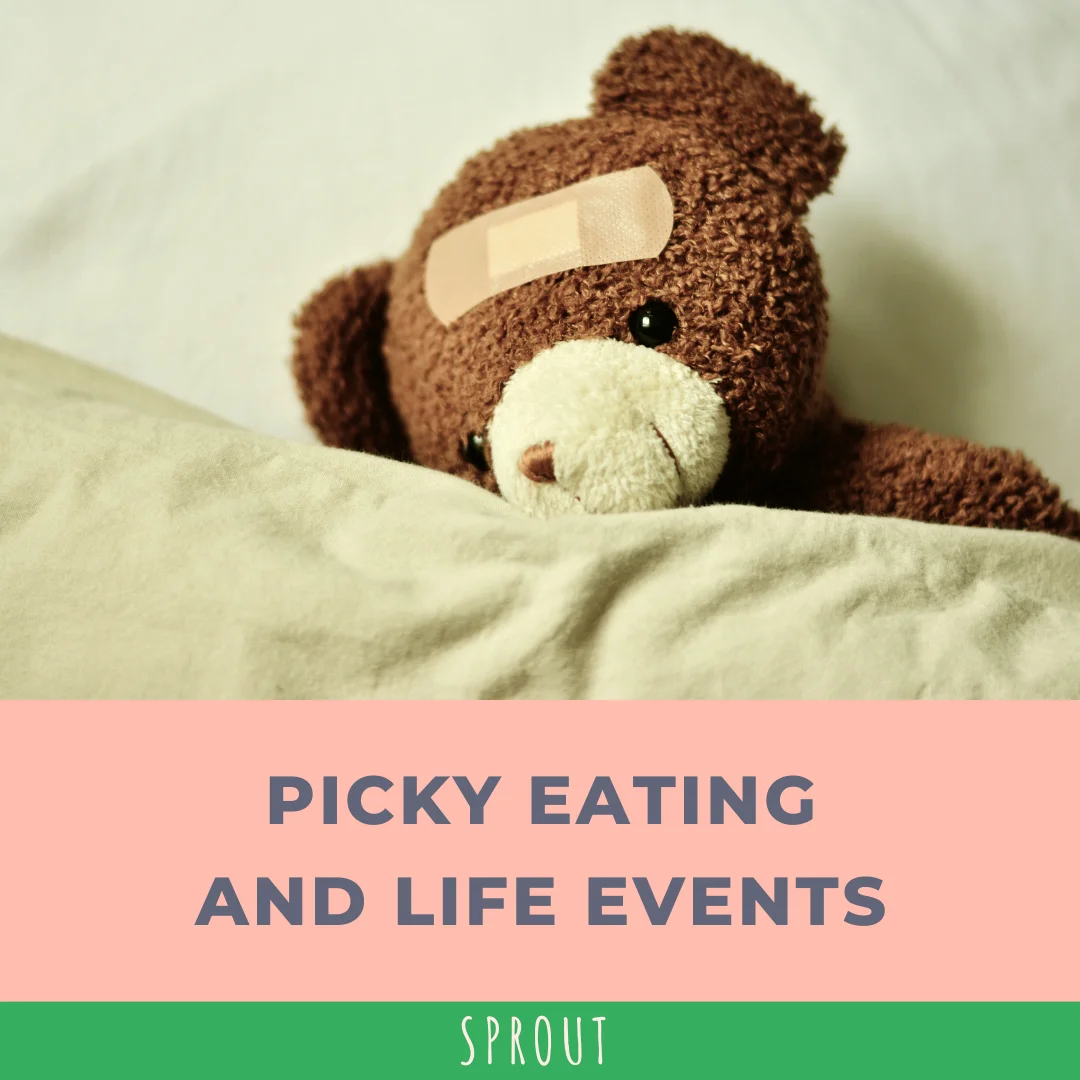If you’ve been coping with fussy eating for a while now, it’s likely you’ve tried everything under the sun to help your little one become more adventurous with food – or at least thought about some pretty out-there strategies. Don’t worry, we’ve heard it all, from circus acts to paying your child to eat - the age-old aeroplane trick doesn’t even get a look in! But what actually works when it comes to fussy eating?
Well, we asked our Sprout users what has worked for them in the past, and what hasn’t - as we are committed to working with parents to develop tools that genuinely help!
Top things that “worked” for parents.
The top three things that parents felt were “successful” included cooking together, having family meals and eating together, and using different environments like eating at nursery or eating with cousins. If these haven’t worked for you – don't panic! We know that there is no one-size-fits all approach and different things work for different families. For instance, if your child has no interest in cooking and prepping food together is a stressful battle then this may not be the solution for you, but if it can be a relaxed and positive time of connection then it may be helpful. Likewise, if a family meal is very tense and full of conflict this may hinder rather than help!
Why do these strategies work? What parents have shared fits very well with the research evidence that highlights the benefit of increasing familiarity (Aldridge et al., 2009), role modelling (Blisset et al., 2013), and having structured meals together (Powell et al., 2017).
What feels “successful”?
So, when parents say things “worked” what does that mean? Strategies or approaches were described as successful if they lead to the child tasting a food, eating a larger quantity, or if the child showed interest and enjoyment.
This is important – because not all progress is seen in the form of tasting new foods. The child’s enjoyment of a mealtime or cooking activity is a major part of developing a positive relationship with food in the long term.
So, what doesn’t “work”?
You may be just as interested in knowing what doesn’t work so you can move away from these strategies! The top three things that parents said were not successful was pressuring or forcing the child to eat or stay at the table, repeat exposure to new foods, and bribery or reward charts. Strategies felt “unsuccessful” if the foods were left uneaten, if the parent experienced negative emotions like worry or guilt afterwards, or if it made the situation worse.
Let’s unpack this a little!
It’s not a surprise that parents found pressuring or forcing the child to be unsuccessful. While this is a very common strategy, particularly when parents are concerned or worried, plenty of research has shown that this can make fussy eating worse (Jansen et al., 2017).
Repeated exposure is recommended, right? Didn’t we just talk about the importance of building familiarity with foods? Again, this all depends on how it’s done. Many parents believed that persisting with offering new foods was “the right thing to do” but had difficulties implementing it leading to a lot of guilt and feelings of failure. Parents said that it was a waste of time, money, and food. We get it, if you know that your child is going to flatly refuse something – it feels like a waste to keep serving it day in day out! And this is why many parents give up on exposing their child to new foods. Other barriers can be that repeat exposure increases parents’ frustration (when it’s not eaten – again!!!) and can be met with a negative response from the child such as crying, gagging and refusing the rest of their meal.
When it comes to bribery or reward charts, some parents said this worked to a certain extent – but interestingly found that it works in the short-term but didn’t lead to any long-term change, and in some cases even made things worse. This is likely because it relies on an external short-term motivator rather than supporting the child’s genuine curiosity and intrinsic motivation to develop.
The approach at Sprout
It’s not surprising that what parents tell us fits very well with the research evidence! Sprout is founded on a research-based approach called responsive feeding that draws on extensive psychological theory and research. It’s all about moving away from short-term tips and tricks (that can sometimes make things worse), and being really responsive to the child’s individual needs, development, and skills.
Considering what has “worked” and “not worked” for parents in the past, our programmes commit to:
· Facilitate children’s genuine curiosity and intrinsic motivation rather than rely on short-term tips and tricks
· Recognise that eating challenges are individual and there is no one-size-fits all approach
· Support you with strategies that are realistic and don’t lead to loads of wasted time and money
· Move away from strategies that result in negative emotions or conflict for you and your child
· Support with trouble-shooting to overcome common barriers like limited time and food waste.
· Provide ways of introducing foods that are not stressful for your child
Ready to find what works for you and your family? Start with our Picky Profile tool (https://eatwithsprout.com/product/picky-profile) as a foundation in your child’s individual needs. We’ll welcome you to a Sprout Team (https://eatwithsprout.com/product/sprout-team) where you can access digital content, simple and comprehensive videos, live Q&As and work alongside other parents who share a similar experience. Time to say goodbye to those circus tricks, generous pay-outs for tasting new foods, and the dreaded aeroplane game to focus on what really helps your little one grow and thrive in the long run.

